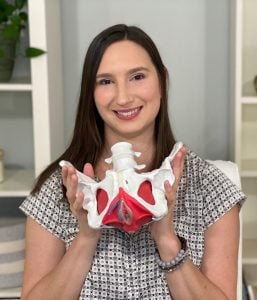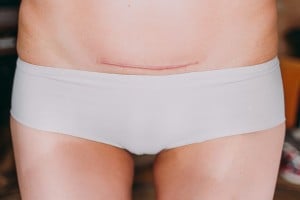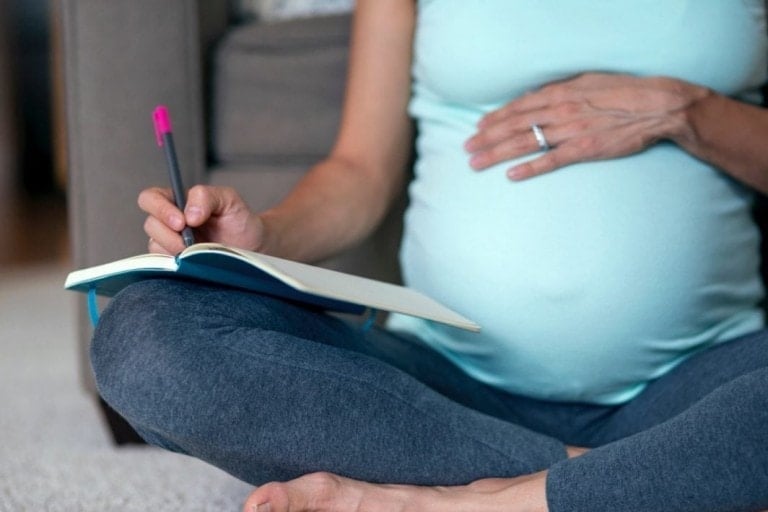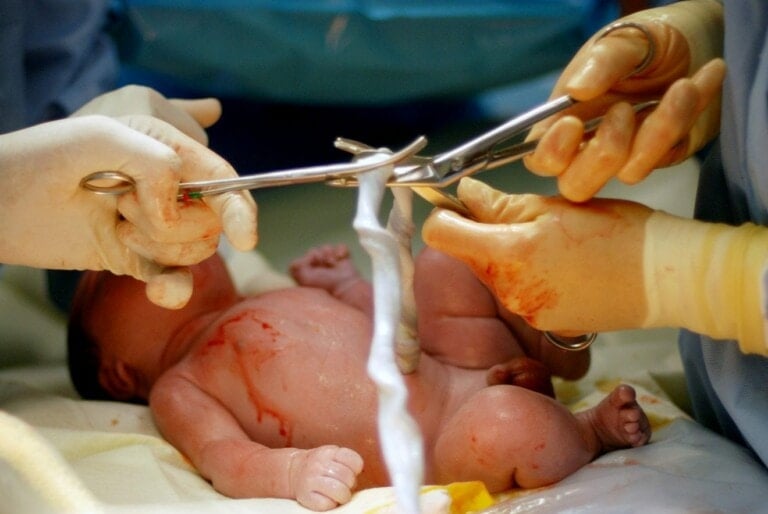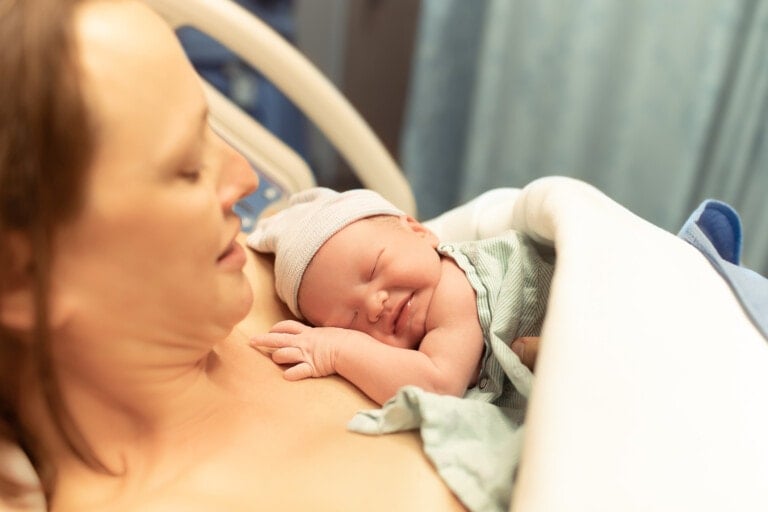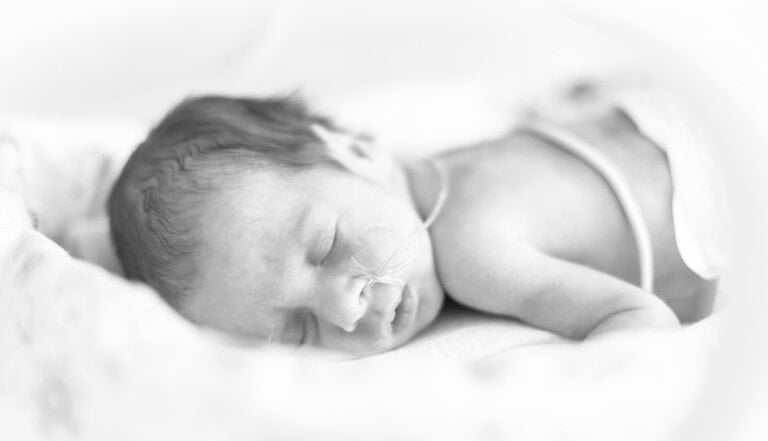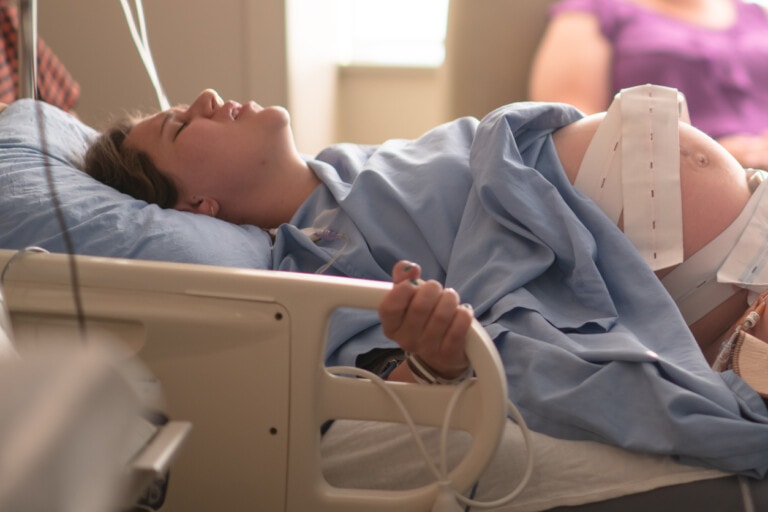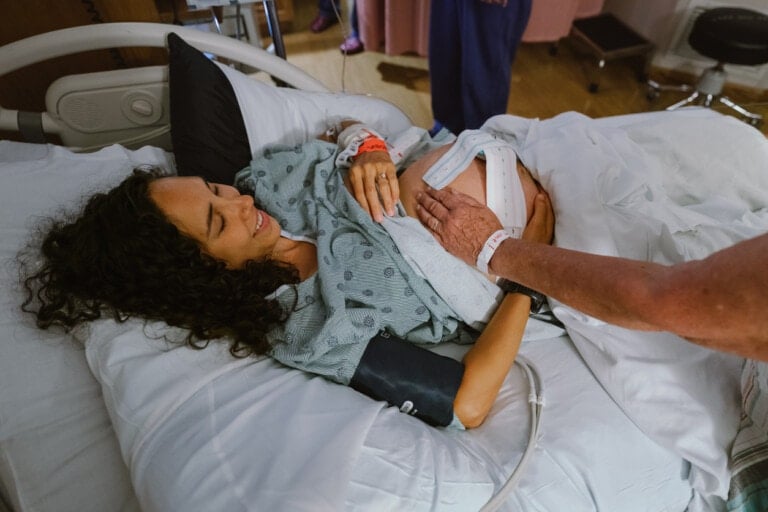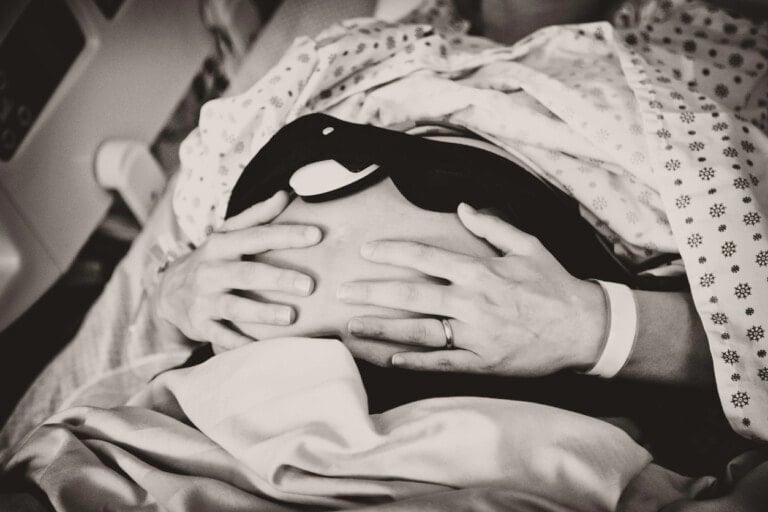As a pelvic floor physical therapist, I have many patients who have just had a baby. One of the most common issues I see in these patients is the effects of perineal tearing. One day, a frazzled first-time mom, whom we will call Lily, sat across from me. Her son Caden stirs in the stroller as Lily automatically pushes it back and forth. “He’s fussy and might wake up,” she mumbles out apologetically.
After having Caden six months ago, Lily returned to Crossfit but then quickly booked a pelvic floor physical therapy appointment. She had begun to experience urine leaks when she jumped, performed double-unders, and even when she sneezed or coughed. So I start working my way through her history: how are her bowels and bladder? How did the birth go?
It turns out she had a second-degree perineal tear that required one stitch. She pushed on her back and was told to hold her breath while pushing. When I asked if she had pain with intercourse, her eyes widened in surprise. “Yes, since having Caden, sex is always painful initially but usually goes away. Mostly.”
I paused and asked more questions about her pain. She reveals that sex has been much less frequent and has caused a strain on her relationship. Her husband can’t always perform because he hates it when he sees pain on her face. She used to enjoy intimacy, but now, it’s that much harder when thinking about a second child.
Fast forward to the exam, and a soft touch where she tore causes her pain. It is pretty apparent that her pelvic floor needs strengthening, but the biggest issue is the pain with sex from her scarring.
Lily’s story is not unique. In fact, it is far too common, and I see women with many similar conditions. One condition that wrenches my heart is when women share that they experience pain with sex and how often doctors dismiss it. Birthing parents are told “things are different,” “take a warm bath,” “drink a glass of wine,” or “just try to relax.” There are several ways to treat pain with sex, and one is to address the tears.
But wouldn’t it be even better if she could have avoided or reduced the tearing to begin with?
What is Perineal Tearing?
The pelvic floor muscles and vagina can stretch to more than three times their normal size during vaginal birth. The nerves that allow these muscles to move are stretched up to 35%. Under normal conditions, this would always result in injury; however, the hormonal shifts during pregnancy allow a birthing person’s nerves, skin, and muscles to be stretched much more than normal.
During vaginal birth, the area at the bottom of the vagina can tear. Tearing can occur in the vagina, vulva, perineum, or the area between the vagina and anus or into the anal sphincter. A tear can be as limited as the skin of the vaginal opening or as deep as the anal sphincter.
Tears are graded 1-4. A 1st-degree tear only includes the skin and mucosa. A 2nd-degree tear extends into the muscles. An episiotomy is considered at least a 2nd-degree tear. Grade 1-2 tears generally are not related to leakage of bowels or bladder. Third and 4th-degree tears extend into muscles and anal sphincters and need surgical repair. Having a 3rd or 4th-degree tear may predispose you to leaking stool later, making rehabilitation even more important.
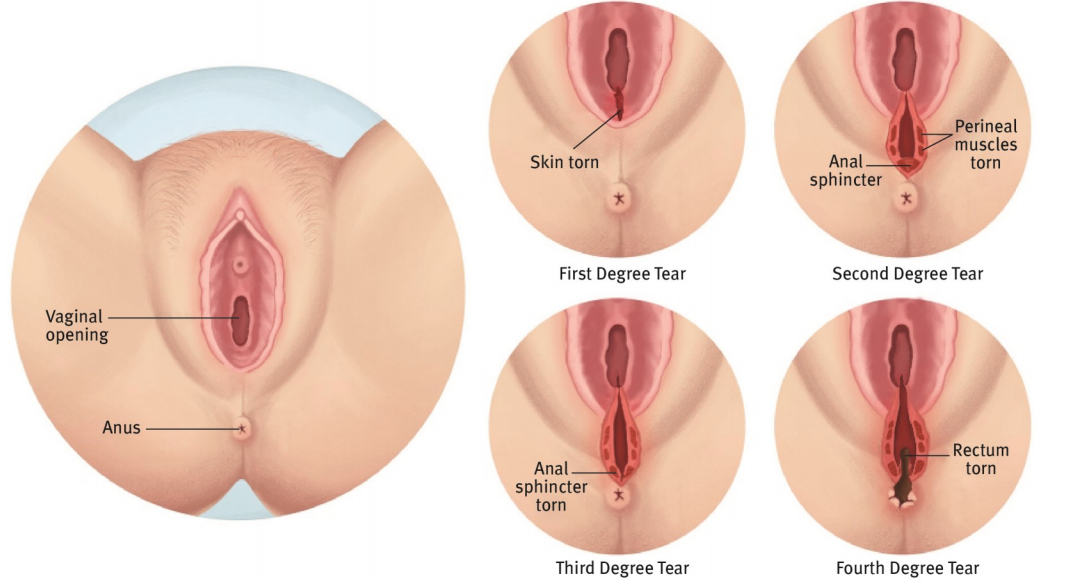
How Common Are Perineal Tears?
According to the American Urogynecologic Society, tears occur in up to 90% of women during their first birth and between 44 and 79% of birthing women overall.1 Tears are related to the baby’s size, whether or not it’s your first delivery, and genetics.
What Does A Tear Mean?
Any injury needs to lay down scar tissue to heal, which takes 6-8 weeks. Yet scars are weaker than normal tissue and can cause pain and contribute to pain with sex and urinary or fecal incontinence. Also, in the early days of postpartum, tears can make peeing and pooping after birth much more uncomfortable. Luckily, there are ways to help ease that first time on the toilet.
4 Tips to Minimize Your Risk of Tearing
As a pelvic floor physical therapist, I teach a few strategies to help have a better labor with less likelihood of perineal tearing.
Perineal Massage
- Starting to massage the perineum between 34-36 weeks can help the tissues stretch better.2 Research shows that it doesn’t cause any harm and may help reduce your risk of tearing.3
- Start by applying a warm wet washcloth to your perineum or take a warm bath.
- Start with clean hands and trimmed nails. Lay reclined & use a mirror if you would like.
- Apply lubricant to your fingers. Make sure it’s a good lubricant without parabens or glycerin.
- Insert 1 or 2 thumbs about half to 1 inch.
- Apply gentle pressure down and out diagonally for 1-2 min. Then, press straight down for 1-2 minutes. Use your fingers to make a “U” shape or smiley face shape.
- Perform a few times per week for 3-5 minutes.
Learning How to Push Correctly
When you go into the pushing stage, you use your diaphragm, abdominals, and pelvic floor to help with birthing. Your pelvic floor muscles have to open while your abdominal muscles and diaphragm create pressure from above to help your uterus push out your baby. Learning how to relax your pelvic floor and push correctly can help you open better during birth.
The pelvic floor muscles interact with our breathing muscles, and it’s important to make sure they are working together well. Practicing deep diaphragmatic breathing can be helpful for pelvic floor relaxation as well.
*Everyone asks me about Kegels, but pelvic floor relaxation is key during labor and delivery.
Knowing when to push is just as important as how to push, leading to number 3.
Positioning During Birth
Your position during birth can increase or decrease your risk for tearing and pelvic floor muscle injury. For example, laying on your side or getting on your hands and knees leads to less damage to the pelvic floor. If you choose an epidural, laying on your side with a partner or sling lifting your leg is a great option.
On the flip side, laying on your back can restrict the motion of your tailbone and is related to a higher rate of perineal tears. Squatting also leads to a large number of tears. In the US, we don’t squat often enough to make it a natural birth position. In other cultures, people squat regularly: to have a conversation, eat, and empty their bladder.
Building a Great Team
Choose birthing professionals who will respect your wishes about positioning and pushing. If you have a doula, they can help reduce the likelihood of a C-section and having an operative birth. Ask your midwife or physician if they are comfortable catching babies in whatever position you would like to try.
So You Tore, Now What?
My advice to most pregnant people is to prepare for a perineal tear and healing because, statistically, it will happen. In the short term, make sure you have a pain management plan. Typical pain management can include any ice packs, sitz baths, medications, padsicles, and preventing constipation. Also, prepare yourself for your first poop and pee — the first time you go can be painful even if you didn’t suffer a tear.
Prepare for the Long Term
Once healing has taken place, think about retraining your pelvic floor muscles and core. Regardless of how you gave birth, the pelvic floor and abdominal muscles were distended by your growing uterus and need rehabilitation. In France and now the UK, all birthing people see a pelvic floor therapist, which I’d love to see catch on in the United States.
If you have any scars from giving birth vaginally or via C-section: massage the scars by yourself or with the help of a professional or partner. Scars take 6-8 weeks to close and about 12 weeks to finish healing. After the scar is healed, massaging it directly can help the tissue remodel so that the haphazard and weak collagen of scar tissue is broken down and strengthened.
Scar tissue is often uncomfortable and may cause negative emotions. Scars can affect how much you leak and lead to pain with sex. Some people need to start very gently with a warm washcloth in the shower. Remember, nerves take longer to heal than skin and muscle. Any superficial skin nerves that were cut or torn through may feel like tingling, burning, and/or pain.
Disclaimer: This does not constitute or replace medical advice or evaluation.
Find a Pelvic Floor Physical Therapist
I had the pleasure of chatting with Dr. Julianna Allen all about this topic. Watch to see what she recommends women to do during pregnancy and childbirth to reduce their chances of tearing during birth.














